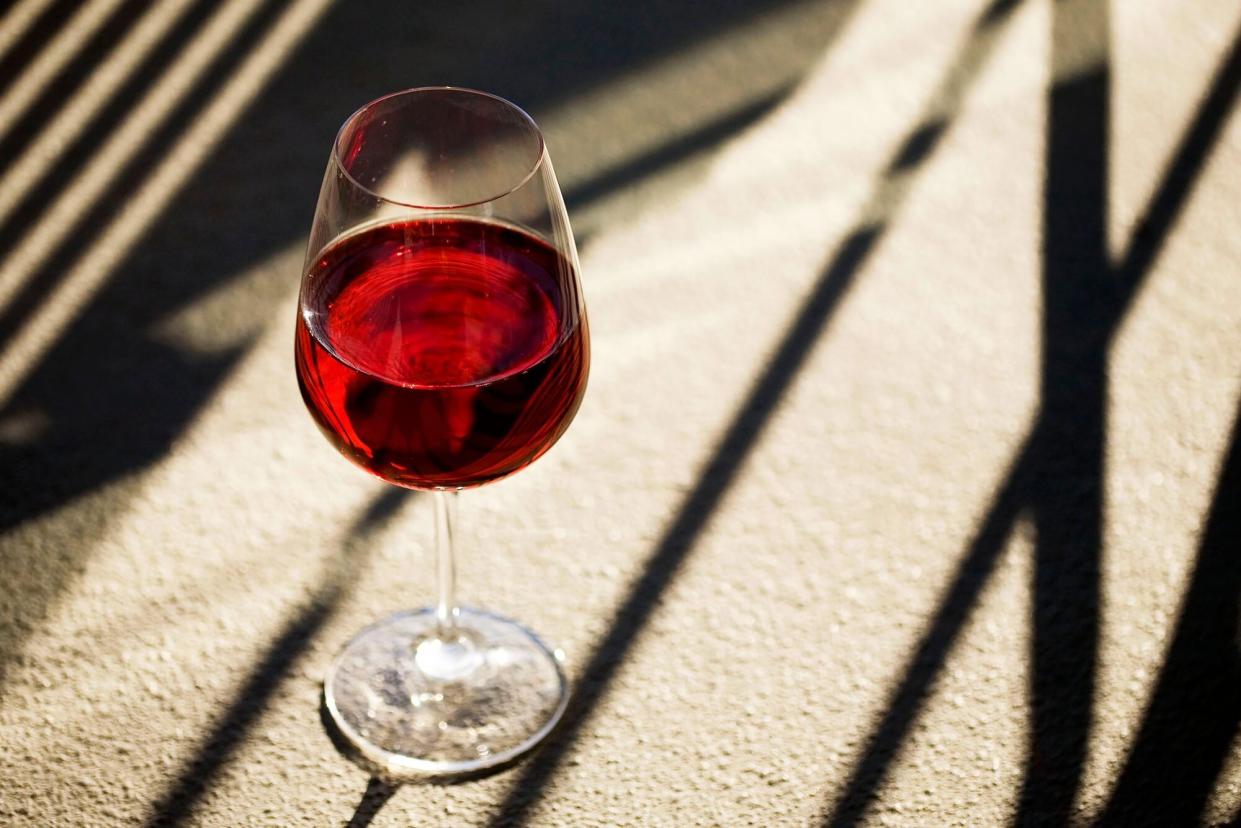Everything You Need to Know About Dolcetto

Sarah Beebe / EyeEm / Getty Images
Dolcetto is a grape variety that is deeply tied to a single region: Piedmont, in the northwest of Italy. Dolcetto wine has earned a strong reputation among sommeliers and ardent fans as a red that can be relied on to consistently express that one particular place, often at a great value.
While Dolcetto is occasionally grown in other parts of the world, those plantings tend to be relatively small pockets. When it comes to Dolcetto, Piedmont is king. To fully appreciate its importance, check out our Dolcetto wine guide below.
What Is Dolcetto Wine?
Dolcetto, which means "little sweet one" in Italian, is produced from the grape variety of the same name. Confusingly, it's not a sweet wine at all, but rather friendly with berry fruit and framed by occasionally pronounced but not overpowering tannins. It is primarily grown in the Piedmont region of northwestern Italy, most notably in and around Alba and Dogliani. There are important differences between them (more on that later), but in general, Dolcetto is used to produce a red wine of generous berry fruit, hints of flowers like violets, an occasional undertow of savoriness, and enough tannin to balance richer foods but not so much weight that it overwhelms lighter ones.
Where Does Dolcetto Wine Come From?
Dolcetto is most prominently planted in Piedmont, the region in northwest Italy that is also home to Barolo, Barbaresco, and Barbera. In many ways, it shares more in common with Barbera, which is also intended to be opened without much time in the cellar, as opposed to Barolo and Barbaresco, which tend to benefit from more age. There are some Dolcetto wines that can age for a few years, but the majority of Dolcetto bottles are best opened up in their youth, the better to appreciate their vivid fruit.
In general, Dolcetto d'Alba is a bit less ripe than Dolcetto di Dogliani, but that's a generalization that is often disproved, depending on the specific Dolcetto under consideration. Outside of Piedmont, there are some very good Dolcetto wines produced in Texas and parts of the Central Coast of California, too.
Why Should You Drink Dolcetto Wine?
Dolcetto is like a secret weapon in the tool belt of sommeliers: It's a red wine that doesn't overwhelm with power or assertiveness, and it's structured by balanced tannins, while offering the kind of fresh berry fruit that perks up a meal. Dolcetto pairs with pizza, pasta with tomato sauce or cream sauce, mushrooms, and a variety of meats, from simple charcuterie to grilled steak.
When enjoying Dolcetto, it's best to chill it down a bit. Cold Dolcetto is likely to be astringent, but a 20-minute stint in the refrigerator will allow its fruit and violets to shine with particular clarity. And there's no need to lay it down in a cellar or wait for several years to pop the cork: Most Dolcetto is ready to be enjoyed immediately.
What Does Dolcetto Taste Like?
Dolcetto shines with its flavors and aromas of brambly berries and cherries. There is often a seam of spice running through it, as well as a lift of violets. With a bit of a chill, Dolcetto becomes even fresher and more vibrant.
Five Great Dolcetto Wines
There are countless great Dolcetto wines on the market today. These five producers, listed alphabetically, are a perfect way to start exploring all that Dolcetto has to offer.
Brovia Dolcetto d'Alba "Vignavillej"
Brovia has been producing notable wine since the mid-19th century, and this Dolcetto, crafted from organically grown grapes, explains that longevity in every excellent sip.
Giacomo Finocchio Dolcetto d'Alba
This small-production Dolcetto (only around 750 cases are made on average) comes from a pair of parcels of old vines planted more than 30 years ago, and was aged in stainless steel and Slavonian oak.
Pecchenino Dolcetto di Dogliani San Luigi
Grown on 54 acres and aged entirely in stainless steel, this Dolcetto, with its berries and energetic acidity, is a natural pairing partner for everything from pizza to hard cow's milk cheeses.
San Silvestro Dolcetto d'Alba "Primaio"
The fourth-generation Sartirano family helms this respected estate, and while they also produce age-worthy Barolo, among other wines, this Dolcetto is a great example of their work, too.
Vietti Dolcetto d'Alba Tre Vigne
Vietti's Tre Vigne Barbera may get more attention, but this excellent Dolcetto, aged in stainless steel, is vibrant, food-friendly, and worth checking out.

